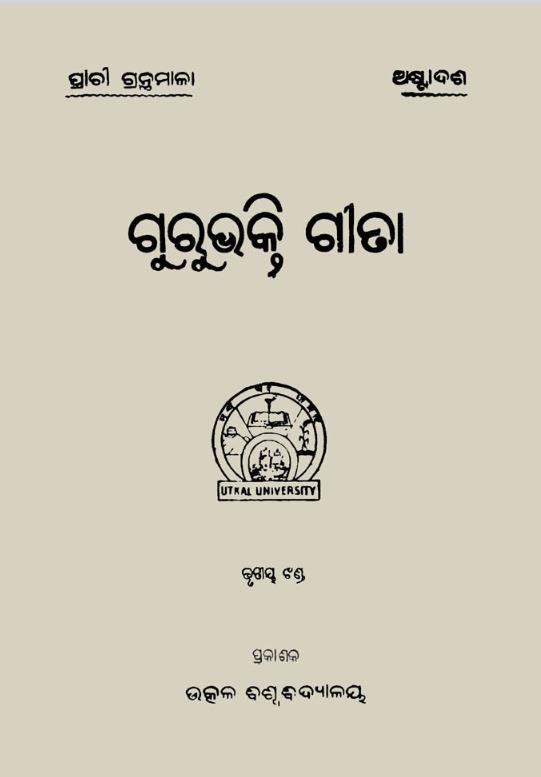Published in 1930, with a reprint in 1970, Gurubhakti Gita, v.03 is an essential text in the spiritual and philosophical landscape of Odia literature. Written by Achyutananda Das, an influential figure in the Bhakti movement, this book explores the profound relationship between devotion and knowledge. The editor, Arta Ballabha Mohanty, has played a significant role in preserving and presenting this vital work for modern readers.
The Gurubhakti Gita is part of a larger tradition of devotional literature that serves as a guide for individuals seeking a deeper understanding of spirituality through the lens of devotion to the guru. Achyutananda Das, often regarded as a saint and poet, emphasizes the importance of surrendering oneself to a spiritual teacher as the pathway to enlightenment. The text is imbued with philosophical insights backed by the teachings of both Hindu scriptures and personal experiences of the author.
At its core, the Gurubhakti Gita is a celebration of the guru and the transformative power of faith. Achyutananda Das delves into the idea that true knowledge begins with humility and devotion. The relationship between the disciple and the guru is portrayed as sacred, serving as a microcosm of the broader relationship between humanity and the divine.
One of the compelling themes of the book is the concept of surrender. Achyutananda deftly illustrates how surrendering to the guru is not a sign of weakness but rather an acknowledgment of the limitations of human understanding. Through this surrender, the disciple opens themselves up to divine grace, leading to spiritual awakening.
The text also raises important discussions on the nature of the self, the universe, and the ultimate reality. Drawing on metaphysical concepts, Achyutananda encourages readers to reflect on their existence and their connection to the cosmos. He conveys that true wisdom is attained not through intellectual pursuit alone, but through spiritual practice and devotion, which are emphasized throughout the verses.
The Gurubhakti Gita is written in a lyrical style that combines poetic beauty with philosophical depth. Achyutananda’s use of the Odia language is both poignant and captivating, making complex spiritual ideas accessible to a wide audience. The rhythm and meter of the verses contribute to its recitative quality, encouraging readers and devotees to chant and internalize the teachings.
Despite being penned in the early 20th century, Gurubhakti Gita remains incredibly relevant in contemporary discussions on spirituality and personal growth. In a world often dominated by material concerns and existential questions, Achyutananda’s insights provide solace and a path to deeper understanding. This text serves as a reminder of the timeless nature of spiritual truths and the enduring quest for meaning in our lives.
Books Info
| Books name | Gurubhakti Gita / ଗୁରୁଭକ୍ତି ଗୀତା |
| Author | Achyutananda Das; Arta Ballabha Mohanty, Ed. |
| No Of pages | 176 |
| Publisher | NA |
| Publication | 1930 (Prachi), 1970 |
| Printed At | NA |
| Distributor | NA |

